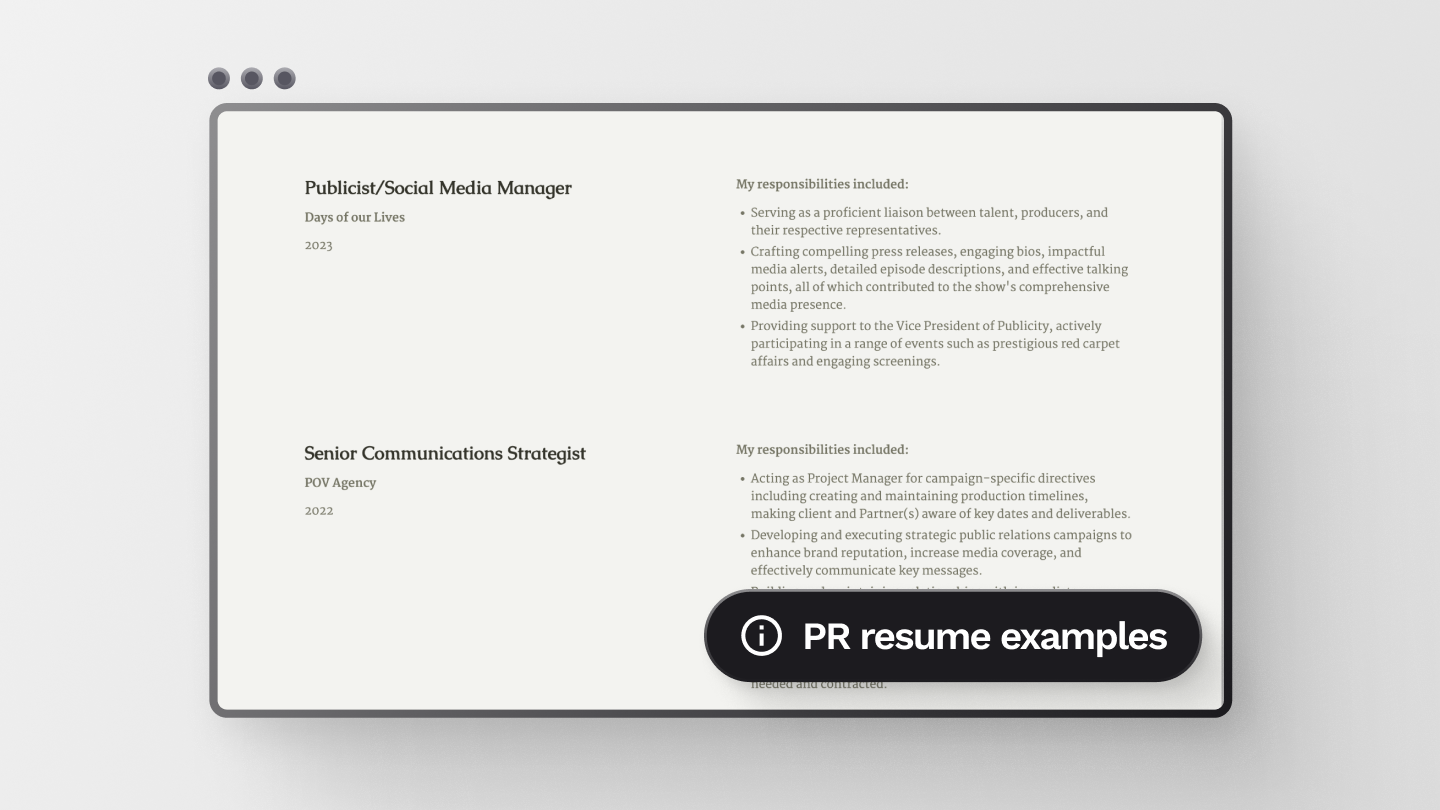What to Include in Your Freelance Portfolio Website (with Examples)
What do you need to take your portfolio website from “here, I dumped a bunch of projects on you” to “you’d be silly to hire anyone else”? Read on and you’ll find the 7 things you should include in your freelancer website. We’ve added examples to each, so you can get a little inspiration along with your checklist.
1. A strong tagline
Arguably, the most important part of your portfolio website is your tagline. That’s the first thing people see, and it helps them decide if they’re even at the right place. So make sure you don’t just have your name on top, but that you write a strong tagline.
What makes a tagline strong?
There are two things that could make a tagline stand out.
First, if it’s crystal clear. It should say exactly who you are, what you do, and what people can expect from you. A great example of this is Carmen’s:

The second approach is making your tagline witty and engaging. In the world of bland, AI-written texts, you shouldn’t underestimate the power of copywriting and asking engaging questions. Just like Ellie did:

2. An about section or page
A tagline is a great starting point for telling potential clients who you are, but there’s only so much you can fit into a single sentence. That’s what the “about me” page or section is for.
If you want to keep your page short and simple, you can add a simple about me section to your homepage. Include a photo of yourself to the side if you haven’t added one to the top of the page already, and finish it off with a call-to-action. Like Shaylee did in her marketing portfolio:

If you prefer to separate it from the rest of your content, or have lots to say, you can put it all on a separate about me page. It still doesn’t have to be super long if you don’t want it to. Here’s Ivy Jolin’s about me page for inspiration:

Just make sure to remember: the purpose of the about me section on your freelance portfolio website is not to gush about your personal interests and hobbies. It’s to give context that can convince potential clients to hire you and not others. It’s the perfect place to highlight your unique selling point.
Not sure what your USP is? Create a Copyfolio account, try the free branding quizzes, and find out!
3. A services page
This one should go without saying: as a freelancer, you need a services page. Or a services section somewhere on your website, at the very least. This is where you can outline the type of projects you can be hired for—and yet another chance for you to convert leads into clients.
Your services page can be short and straightforward, or a little longer but fun and engaging, like Susanna’s here:

If you decide to showcase your prices, which a lot of freelancers actually don’t, then your services page is the perfect place for that too.
4. Your areas of expertise
A little similar to your services are your areas of expertise. These are typically broader though, so they make for a perfect teaser on your homepage. They say enough for leads to know you might be the right freelancer for them, but are vague enough to make them still want to check your projects or services.
We’ve brought you two examples of this from the portfolio websites of two freelancers, Meredith and Bruna:

Meredith's areas of expertise

Bruna's areas of expertise
Meredith and Bruna both built their portfolios with Copyfolio.
5. Info about your professional background
As the first step of showing your credibility in your portfolio website, consider adding some infor about your professional background—if you haven’t done so already in your about me section.
That could mean showing off certifications, highlighting previous experiences and education, or even adding your full CV. A great example of that is Andrea, who has her CV on her homepage, giving people a glimpse into her background:

Andrea built her portfolio in Copyfolio, so she could use a preset CV section to type in her resumé. This way she didn’t have to deal with a clunky PDF or worry about matching it to her site’s visual brand identity, all in just a few clicks.
6. Logos of your previous clients
To make yourself look even more credible in your potential clients’ eyes, you should also showcase the logos of some of your previous clients, especially if you’ve worked with some big names before. You can add them to your homepage for maximum impact, like Chuck did:

For maximum impact, coordinate the logos you showcase with the projects in your portfolio. That way, clients will see the work you did for these brands, making your claims all the more credible.
7. Your best projects
And of course, the star of the show: your best projects.
Yes, it’s last on the list, but only because it’s kind of obvious. Because how could it be a portfolio website without the project showcase, right?
That said, make sure you choose only your top-tier projects you’re really proud of. It’s better to show 3 exceptional pieces of work than a dozen, half of which are mediocre.
The best way to do it depends on the projects themselves: you can upload videos or embed an Instagram feed if you work in social media, upload PDFs or link out to published pieces if you’re a freelance writer, or create short but impactful case studies if you’re a marketer.
For a little inspo, here’s how Mariah’s projects look on her portfolio website’s homepage:

All the freelance portfolio website examples above were made with Copyfolio. If you’re looking for a quick and easy way to create a stunning and responsive site that converts, then click here and give it a try for free.
Copyfolio's the best tool to create your portfolio website, as it has:
- An intuitive, drag-and-drop, no-code editor
- Easy-to-use, customizable templates
- A dedicated portfolio section for easy project showcase
- Designer-made color palette with the option to create your own
- Extra sections, like the logo wall that help build credibility
- The option to upload videos or embed Instagram feeds for people working in social media or content creation
- A simple way to buy or connect a custom domain for full professionalism
- Features to help figure out your brand identity and get the most out of it
The list is endless, and it's all packed into the easiest visual editor.


